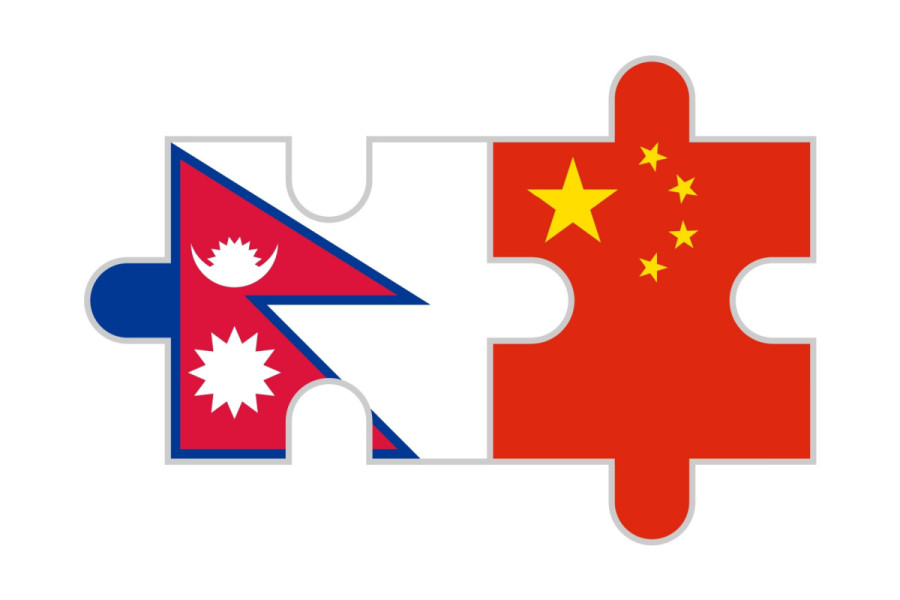Columns
Belt and Road to nowhere
While negotiation with China on financing modality is possible, we are yet to see if it addresses our concerns.
Sourav Dahal
On December 31, just a day before the inauguration of the Pokhara International Airport (PIA), the Chinese Embassy in Nepal claimed the PIA to be a flagship project of China’s Belt and Road Initiative (BRI). The PIA was surely constructed by a Chinese company with a loan from the Export-Import Bank of China (EXIM Bank), but the project doesn’t fall under the nine BRI projects proposed by Nepal. China seems eager to portray BRI’s success story in Nepal, but the Nepal-China BRI agreement, signed in 2017, has remained in limbo ever since. A month back, China sent an expert team to initiate the feasibility study of the Kathmandu-Kerung railway—a project under the BRI. There have been a few other developments over the years, but neither has a project undergone the construction phase nor have any provisions been implemented.
Shifting narratives
President Xi’s announcement of the BRI, then One Belt, One Road (OBOR), was met with enthusiasm across regions, barring the US-led West. The prospects of connectivity and trade links with China—an emerging superpower which had experienced unprecedented economic growth for decades—were of interest to many. China, however, failed to sustain the initial momentum. Its lending spree slowed in 2018, and the initiative also got embroiled in endless controversies. The BRI loan component with relatively high-interest rates with a shorter payback period, the imprudent lending pattern, cases of corruption and irregularities, and China’s hardball approach to troubled debtors met with criticisms.
The strategic Hambantota port of Sri Lanka, handed over to a Chinese company on a 99-year lease over failing to repay loans, became a poster case of the challenges associated with BRI projects. China’s similar hardball approach in dealing with troubled debtors led some to believe that Beijing was guided by “debt trap” or “strategic trap” diplomacy. China has then been making some efforts to broaden the initiative’s acceptance and credibility. Some have labelled this BRI 2.0, but the initiative is yet to regain traction.
The BRI narrative has followed a similar trajectory in Nepal. The country signing up for the BRI was met with welcome remarks from across the spectrum. Enhanced connectivity ties with China, trade diversification, the prospects of reduced reliance on India, and the promise of Sino-Nepal collaboration on large-scale infrastructure projects had then caught the mood of the nation. The mainstream political parties, particularly the communists, adopted bullish rhetoric on the BRI projects labelling them as an “economic/geopolitical game changer” for Nepal.
The BRI managed to evade scrutiny because the Memorandum of Understanding (MoU) and all other documents were kept undisclosed by both parties for five years. In comparison, despite being a development grant, the MCC compact agreement between Nepal and the US was scrutinised to the extent that its clauses were debated from Parliament to tea shops. Only after the MoU was leaked by a media house seven months back, did contentious provisions like policy exchange, use of national currency for trade and feasibility study for the free trade agreement draw scrutiny and criticisms.
Unprepared Nepal
Nepal lacked the required preparations, from the signing of the MoU to the selection of projects. To date, not a single ministry, apart from the Ministry of Industries, Commerce and Supplies (MoICS), has conducted a study to assess the impacts of the BRI. MoICS had conducted an economic analysis, which showed a decline in GDP by 0.24 percent if Nepal were to move forward with the FTA. On the contrary, China’s report suggested a 4.8 percent increase in Nepal’s GDP. The report was forwarded to China, suggesting to sit for a meeting to discuss it; however, there has been no response from the northern neighbour.
Nepal’s lack of preparedness is most evident in the selection of projects. In 2018, then Prime Minister KP Sharma Oli presented 35 infrastructure and connectivity projects to his counterpart—China’s PM Li Keqiang. Upon request from the Chinese side, the number of projects was trimmed, first to 15 and upon China’s further insistence on reducing the number to a single digit, nine projects were subsequently proposed.
Loan component
When the MoU was signed in 2017, the political leadership was cognizant that the BRI entailed a loan component. However, the MoU has no provision for the financing modality of projects, and no agreement has been reached yet. According to AidData, a research lab, the average interest rate on Chinese loans for BRI projects is 4.2 percent, with a grace period of less than two years and a maturity length of less than 10 years. In comparison, the maximum interest rate of soft loans that multilateral donors such as the World Bank and the Asian Development Bank provide is around 1.3 percent with a more extended repayment period. Nepal simply can’t afford to undertake BRI projects with commercial loans with a high-interest rate, but it was only after the Nepali Congress-led alliance formed a government in 2021 Nepal took a firm stance on this. While there still remains room for negotiation with China on the financing modality, it is yet to be seen if China would seek to address Nepal’s concerns.
Geopolitical dimension
While China has portrayed BRI as merely an initiative that would create a win-win scenario for all participating nations, the US-led West has viewed the BRI as China’s grand strategy under the guise of connectivity, infrastructural investment and financial integration. The idea is that the initiative serves the ulterior purpose of reshaping and redefining the world order in China’s favour. In response to the BRI, the US and other G-7 countries have launched a similar initiative: Build Back Better World (B3W). Likewise, China’s regional rival, India, has remained firmly opposed to the BRI right from the start and looks at the BRI from a strategic perspective. This has put Nepal in a tricky position, as it would be difficult for Nepal to tread the thin line of geopolitical balance if and when the Nepal-China BRI agreement were to undergo further implementation.
China’s BRI could help Nepal diversify connectivity, trade, and infrastructural development. However, there are many challenges attached to the BRI implementation. To end this deadlock, a consensus must be reached on the financing modality of projects first. Further, Nepal should take a firm stance not to implement contentious provisions of the MoU and prioritise its national interests. Nepal should remain cautious of the geopolitical implications of the BRI, and seek actively to maintain amicable ties with all the major powers. Above all else, whether or not the BRI implementation gains traction is primarily contingent on China’s flexibility to address Nepal’s concerns.




 19.12°C Kathmandu
19.12°C Kathmandu















